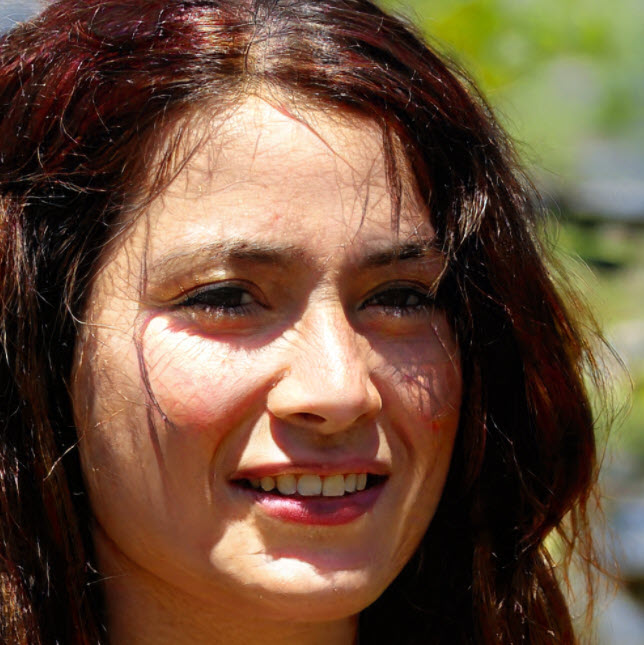Unlocking The Power of the Nikon Z7: Learn How to Change Your ISO Settings!
Introducing the Nikon Z7 — a digital single-lens reflex camera (DSLR) with an integrated, next level autofocus system. With its eye tracking and focus stacking features, this DSLR is ideal for taking stunning travel shots or capturing action scenes in sports photography. It also features an expandable ISO range from 64-25600 allowing you to capture images even when extremely low light conditions are present without sacrificing quality of the shot - making it a great choice for all types of photographers! In this guide, we’ll show you how to change your camera's ISO setting on your Nikon Z7 quickly and easily.
Steps to Change the ISO on a Nikon Z7
Changing the ISO on a Nikon Z7 is an easy task that can be completed in just a few steps. To start, you will need to turn on your camera and access the Settings menu. Then, select ISO Sensitivity Setting from within this menu by either scrolling down or tapping its icon directly. This will bring up all available ISOs ranging from low to high, allowing you to customize it according to your needs and lighting events at hand. Additionally, there are options for configuring Auto ISO as well—which automates the process of adjusting settings accordingly; however this should only be used if one prefers not having full control over their photography environment. Make sure that once done setting up everything correctly to remember save these changes so they persist across different photo sessions!
Finding the ISO Options on the Camera
If you're looking to change the ISO on your Nikon Z7, it's easy enough - with just a few steps. First, turn the camera on and look for an 'ISO' menu option located in one of the top menus (note: some older models may show this as a button). From there you can select which setting works best for your current environment or desired image effect. If necessary use the info/help feature to understand more about photometric settings before making any ISO adjustments. Once selected press OK and start snapping away!
Understanding How High and Low ISO Affects Your Photos
Understanding how to change ISO on your camera can make a huge difference in the quality of your photos. For example, when shooting with a Nikon Z7, having control over its ISO settings is essential for controlling image brightness and noise levels. The lower you set the ISO number (such as 100 or 200), the less sensitive it will be to light — this results in finer details and better overall exposure. At higher values (1600-3200) however, images become increasingly grainy due to increased noise from digital artifacts but may allow for brighter exposures if needed. Experimenting with different combinations of shutter speed and aperture alongside various ISOs allows photographers more dynamic options when capturing that perfect shot!
Using Auto ISO for Simple Adjustments
Using Auto ISO on the Nikon Z7 is an easy way to make adjustments to your photos without having to manually change your ISO. This setting allows the camera's meter system and exposure compensation algorithms to adjust the shutter speed, aperture, or combination of both in order for a correct exposure. To use this setting you will need access to your menu settings after pressing ‘i’ button near back LCD screen . Under Autofocus section look for Auto/Manual Settings > ISO Sensitivity Setting (Auto) option and choose from Norma, High-sensitivity or Low-noise options based on what you are shooting. Once set up correctly, depending where it falls itself by default – Normal is best starting point—you can now simply focus on creating great images instead of worrying too much about allocating proper amount of time tweaking each image separately with manual controls!
How Auto-ISO can help you capture the perfect photo
Being able to adjust the ISO of your Nikon Z7 is essential for capturing stunning photos. With Auto-ISO, you can easily take control over how bright or dark an image appears. When using this feature, you'll be prompted to set a minimum and maximum shutter speed that the camera should use when adjusting ISO levels automatically in different lighting conditions. This way, you won't have to worry about manually changing settings each time as it does all of the hard work for you! Additionally, taking advantage of Auto-ISO will ensure that any images taken are properly exposed without having too much noise from overly high ISOs. To get started on creating amazing shots with ease, give Auto-ISO on your Nikon Z7 a try today!
The Benefits of Manual ISO Control
Using manual ISO control on the Nikon Z7 can open up a world of creative possibilities when it comes to photography. With this feature, you have complete control over your camera’s sensitivity to light, allowing you to adjust settings precisely as needed for any situation. This makes it possible to push boundaries and take photos in challenging lighting conditions without worrying about either overexposure or underexposure due to incorrect auto-ISO adjustments — giving photographers far greater creativity with their shots. Luckily changing the iso on your Nikon Z7 is straightforward: simply press “i+” button at the back of your camera body and navigate through menu options until you reach ISO adjustment mode – then make use of the front/back dials located around shutter release button selection desired setting!
Conclusion
In conclusion, changing the ISO on a Nikon Z7 is easy and can bring many benefits. With manual control you are able to adjust your settings quickly and precisely in order to get the most out of every shot taken. This is especially useful for low light shooting where higher ISOs may be necessary to capture enough detail with minimal noise levels. Taking these few simple steps means that you’ll soon have full control over all aspects of your image creation process—from composition to color balance—and open up new opportunities for creative expression!
